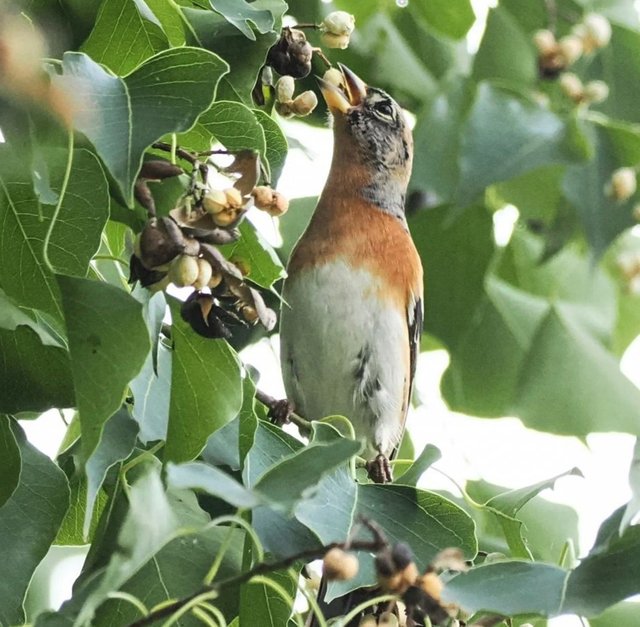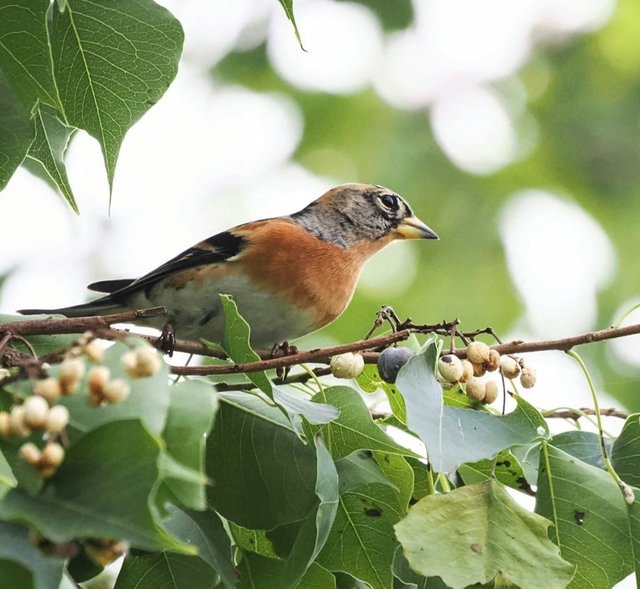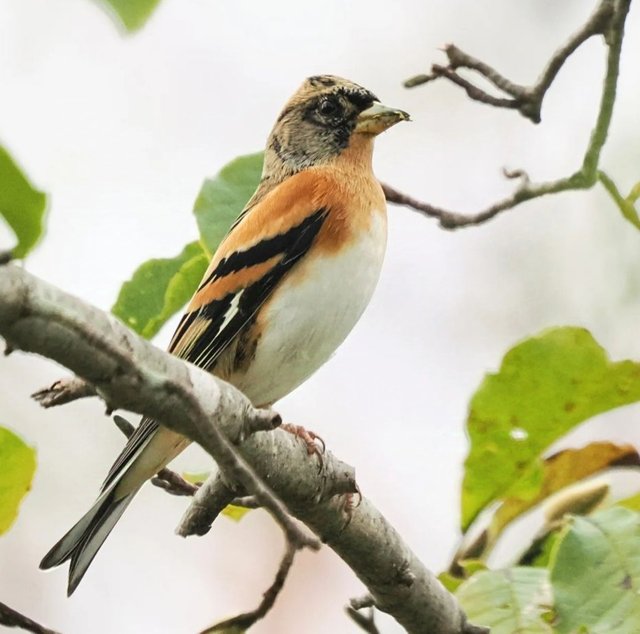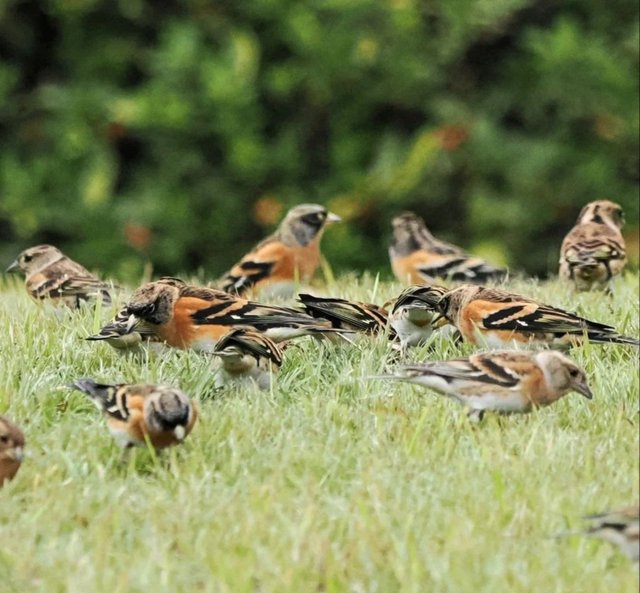So Cute Brambling Bird
The Brambling, also known as the "Mountain Finch," is a small passerine bird in the finch family, Fringillidae. Known for its striking colors and distinct seasonal plumage, the Brambling is a bird native to northern Europe and Asia. It is a close relative of the more common Chaffinch, and the two species share many similarities. However, the Brambling’s unique appearance and migratory behavior set it apart, making it an intriguing species for birdwatchers and ornithologists alike.
Appearance and Plumage
Adult Bramblings have distinctive and beautiful plumage that changes with the seasons. In the breeding season, males sport vibrant orange breasts, shoulders, and flanks, which contrast strikingly with their jet-black heads, back, and wing coverts. The males' feathers are particularly iridescent in the sunlight, showing off hints of blue and green. The female Brambling, while less vivid, also has orange-brown tones on the chest and flanks, but her head and back are typically a more muted gray-brown, making her slightly harder to spot in the wild.
In winter, both male and female Bramblings adopt a duller plumage. The male’s black head and back feathers gain a more brownish tint, helping it blend better into the natural landscape. This seasonal change is a fascinating adaptation, as it provides camouflage during the colder months when the birds flock together for warmth and protection.
Habitat and Range
Bramblings are primarily found across the boreal forests of Scandinavia, Siberia, and northern Asia, favoring coniferous woodlands in the breeding season. These habitats offer ample food supplies and nesting locations. In the winter, however, Bramblings are highly migratory, traveling thousands of kilometers to reach milder climates. Large flocks of Bramblings migrate to western and central Europe, as well as parts of China and Japan. In some cases, they even reach North Africa.
During winter migrations, Bramblings tend to congregate in beech woodlands and other forests with a supply of seeds, their primary winter food. These flocks can be massive—sometimes numbering in the hundreds of thousands—creating a spectacle that is a delight for bird enthusiasts. Occasionally, they join flocks of other finches, which enhances their safety from predators.




